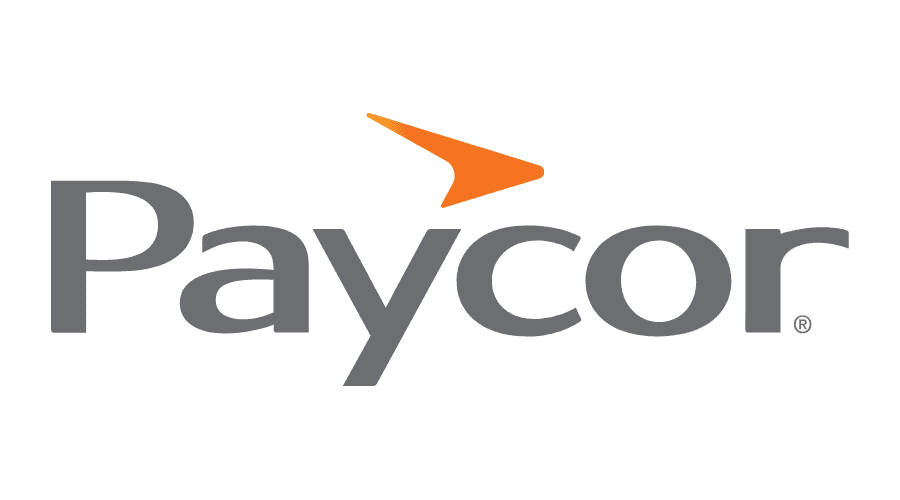Well Equipped for Care: Common Questions About Medical Equipment in Your Home
As you and your family embark on this new journey, you may feel like you’re learning a new language with all of the medical terminology and unfamiliar
equipment names being used. The following information helps to answer some of the common questions you might have. And always ask questions
anytime you’re confused or don’t understand how a piece of equipment helps your son or daughter.
What equipment do I need, and how do I use it?
Every child’s situation is different, but your child may need several pieces of durable medical equipment (DME) at home. You will be able to select a DME company, and the hospital will help you connect with it. It’s very likely the DME company will deliver the equipment to the hospital room a few days before you go home so you can become familiar with it and staff can teach you to use it. The DME provider might help with delivery and setup in your home, unless your child needs to travel home with the equipment, in which case the hospital will help coordinate.
Will my home be safe with this equipment in it?
DME representatives will provide a safety assessment of your home to ensure it is safe for your child’s unique care needs and mobility barriers. Your home health agency also can help to assess the safety of your home environment. You also should contact your electric company to let it know this equipment will be in the home.
Where will I put everything?
Having advanced medical equipment in the house can be very intimidating and unsettling for families, scary for young children and a complete shock for pets. While this can be stressful and confusing, dedicating a little time to planning now will save stress later. Think about where your child will spend most of his or her time in the home. Depending on the equipment needed and the child’s mobility needs, you might need to dedicate space on your home’s first floor. It’s helpful to pick a space where your child will not feel isolated and can interact freely with siblings and guests.
What should my family know about this equipment?
It’s important to understand ahead of time what the equipment is and to make sure all family members know and understand why the equipment will be in the home and why the child needs it.
What does this equipment do?
These are some of the most common pieces of equipment or apparatus that your family may be trained to operate, depending on your child’s specific needs:
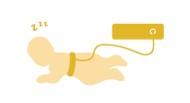 Apnea monitor Apnea monitor
Detects and sounds alarm when your child stops breathing for a few seconds.
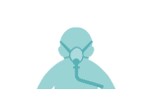
Bilevel positive airway pressure or BiPAP
Very similar in function and design to a CPAP machine. It is a noninvasive form of therapy for patients suffering from sleep apnea.
Continuous positive airway pressure or CPAP
Sends air and oxygen to your child’s lungs through small tubes in the nose or windpipe, also called the trachea.

Gastrostomy tube, g-tube or gastric feeding tube
A tube goes into your child’s stomach and liquids are sent through it for feeding, if your child can’t take food by mouth and needs long-term help with feeding.
 Mechanical ventilator Mechanical ventilator
Helps your child breathe or breathes for your child when he or she can’t by pushing warm air and oxygen into the lungs through a breathing tube called an endotracheal tube. The nurse sets the amount of oxygen, air pressure and number of breaths per minute for your child.
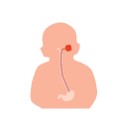 Nasogastric tube or NG tube Nasogastric tube or NG tube
A feeding tube that goes through your child’s nose, down the esophagus and into the stomach. Your child can get breast milk, formula and medicine through it. When it’s used for breast milk or formula, it’s called gavage feeding.
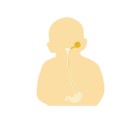
Orogastric tube or OG tube This feeding tube enters through your child’s mouth instead of the nose and goes down the esophagus and into the stomach for breast milk, formula and medicine. When used for breast milk or formula, it’s called gavage feeding.
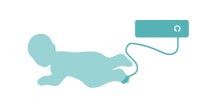 Pulse oximeter or pulse ox Pulse oximeter or pulse ox
A small device wrapped around your child’s foot or hand that measures the oxygen in the blood. It causes no pain and helps nurses know if your child needs more or less oxygen.
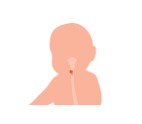
Tracheostomy tube
A curved plastic tube that goes in your child’s windpipe, also called the trachea, through a hole made in the neck. The trachea takes air to the lungs. Your child breathes through the tube instead of the nose and mouth. The tube doesn’t enter your child’s lungs.

Urinary catheter
A thin tube that goes into your child’s bladder through the opening where urine leaves the body. Nurses use it to collect urine for testing.
|


 Apnea monitor
Apnea monitor 


 Mechanical ventilator
Mechanical ventilator Nasogastric tube or NG tube
Nasogastric tube or NG tube Pulse oximeter or pulse ox
Pulse oximeter or pulse ox



